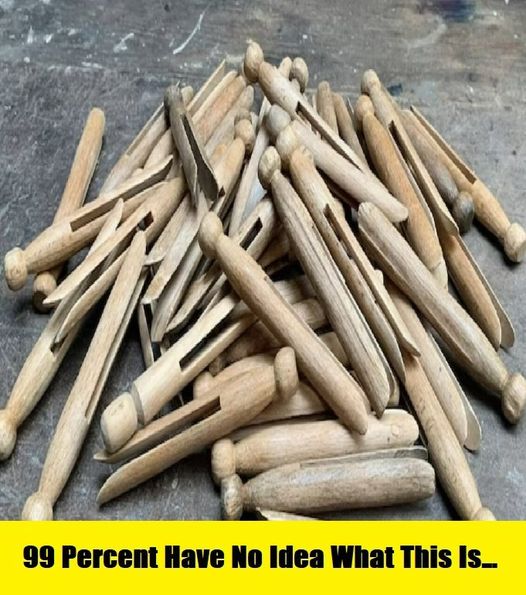Before Dryers, These Wooden Tools “Fed Clothing to the Wind”—Do You Remember Them?

Long before washers and dryers simplified laundry into a press-and-go task, people depended on clever, practical tools to get their clothes clean and dry. Among those time-tested items was a small, unassuming piece of carved wood that played a vital role in laundry routines of the past—and it’s recently sparked a wave of nostalgia across social media.
It all began when a curious user posted a photo online of a handful of peculiar wooden pegs with two “legs” and no obvious mechanism. Their question was simple: What are these things?
The internet’s answer came with a smile—and for many, a memory: “Old-fashioned clothespins!”
These wooden pegs, also known as dolly pegs or laundry pins, may look primitive compared to today’s gadgets, but they once stood at the center of household life. Designed to grip clothing on a line outdoors, they were carved with a single slot at one end, allowing them to slip over fabric and hold tight against the wind—at least most of the time.
Before the era of plastic and springs, these one-piece wooden pins were essential. Families would carry heavy baskets of freshly washed laundry outdoors, hang their garments across a line strung between trees or posts, and clip them in place using these simple tools. With sunlight and fresh air as their only “dryer,” people waited patiently as clothes dried naturally, often taking in the crisp scent of the outdoors with every fold.
But these early pins weren’t without flaws. If the wind picked up, a strong gust could easily send your linens flying—especially sheets or socks. This inconvenience didn’t go unnoticed. In 1853, a Vermont inventor named David M. Smith filed a patent for an improved clothespin: one with a spring in the middle and two gripping “legs” that could pinch fabric more securely. He referred to the risk of pins blowing off the line as “a serious evil to washerwomen,” and his invention soon became the foundation for the clothespins we still use today.
Clothespins—also known in different regions as clothes pegs—have a history that predates even Smith’s patent. Ancient civilizations used similar tools, carved from wood, bone, or even stone, to hold garments in place while drying. Many were handcrafted and uniquely designed, sometimes featuring decorative patterns or family-specific markings, making them as personal as they were practical.
As the industrial age progressed, the wooden peg evolved. The spring-loaded version dominated the 20th century, offering more grip and reliability. Later came colorful plastic clothespins—lightweight, cheap to produce, and more resistant to weather. Still, many laundry traditionalists prefer the rustic charm and durability of wooden pins. They’re biodegradable, long-lasting, and even today, serve purposes beyond hanging laundry—from closing chip bags to adorning craft projects.
For crafters and DIY fans, wooden clothespins are a blank canvas. You’ll find them transformed into Christmas ornaments, puppets, photo displays, and rustic wedding décor. But their origin remains firmly rooted in practicality: they once kept socks, shirts, and bedsheets from drifting away with the breeze.
So, if you ever come across an old wooden peg tucked in the back of a kitchen drawer or hanging from a forgotten clothesline, pause for a moment. That tiny piece of wood represents a time when doing laundry wasn’t just about speed and automation—it was about sunshine, fresh air, and a quiet patience that’s hard to come by today.
Now we ask you: Would you rather lose a sock to the wind or to the dryer gremlins? Either way, there’s a story behind it.